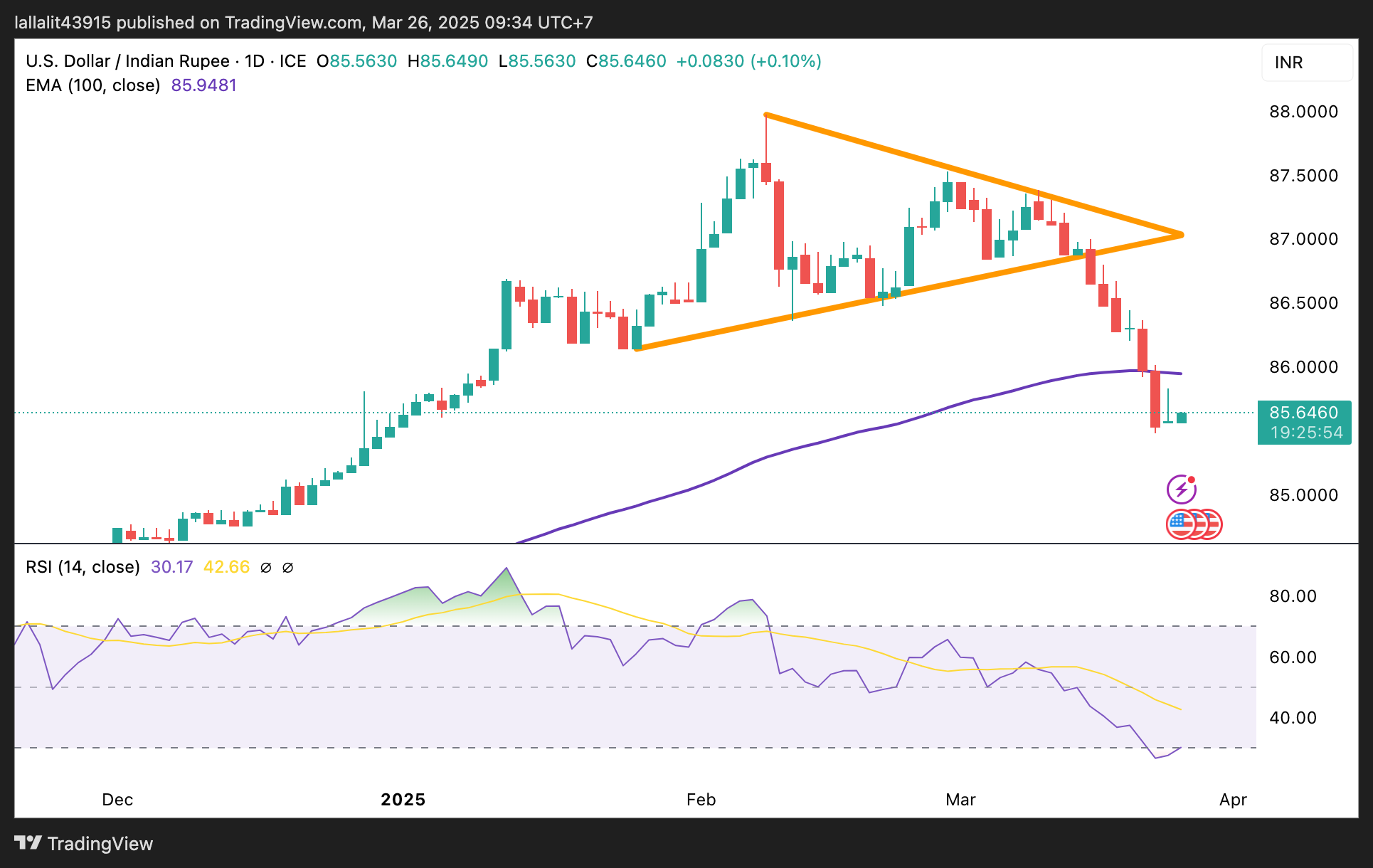The Indian Rupee (INR) loses traction on Wednesday as month-end US Dollar (USD) demand from local oil companies and importers, along with the Greenback’s recovery against major currencies, weighs on the currency. Additionally, rising crude oil prices put further pressure on the INR, given India’s status as the world’s third-largest oil consumer.
Conversely, gains in Indian equity markets and renewed foreign institutional investor (FII) inflows provide some support for the local currency. Investors now turn their attention to the US MBA Mortgage Applications and Durable Goods Orders due later on Wednesday, as well as speeches from Federal Reserve (Fed) officials, including Neel Kashkari and Alberto Musalem.
Indian Rupee Weakens Amid Strong US Dollar Demand
- “The month-end USD demand, particularly from oil companies, along with possible Reserve Bank intervention to cover open short positions, contributed to INR weakness,” noted Anil Bhansali, head of treasury at Finrex Treasury Advisors.
- Meanwhile, US President Donald Trump announced plans to implement copper import tariffs within weeks, according to Bloomberg.
- Economic data released on Tuesday showed the US Consumer Confidence Index falling for the fourth straight month to a 12-year low of 92.9 in March, missing expectations of 94.5. In contrast, US New Home Sales rose 1.8% in February to an annualized rate of 676,000 units, with January’s figure revised upward to 664,000 units from the previously reported 657,000.
USD/INR Bearish Bias Persists Below 100-Day EMA
The Indian Rupee remains under pressure, though the USD/INR pair maintains a bearish outlook, trading below the key 100-day Exponential Moving Average (EMA) on the daily chart. However, the 14-day Relative Strength Index (RSI) remains below 30.00, indicating oversold conditions and suggesting the possibility of short-term consolidation or a corrective rebound.
Key support for USD/INR stands at 85.60, the low from January 6. Further downside could see the pair test 84.84, the December 19, 2024, low, with the next critical level at 84.22, the November 25, 2024, low.
On the upside, resistance is seen in the 85.95-86.00 region, marked by the psychological level and the 100-day EMA. A decisive break above this zone could open the door for further gains toward 86.48, the February 21 low, followed by the 87.00 round figure.






